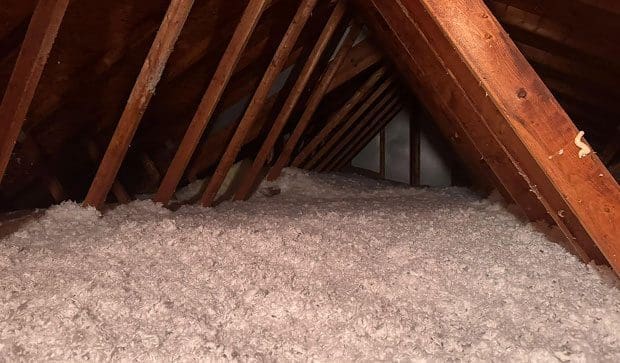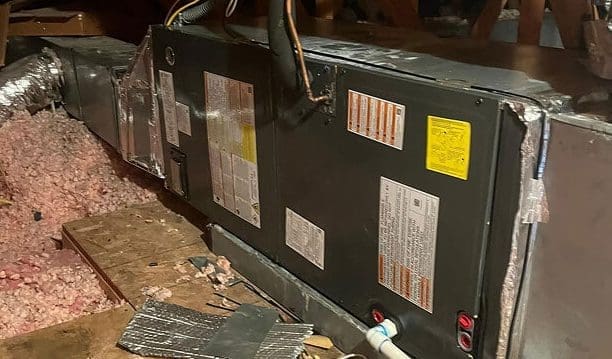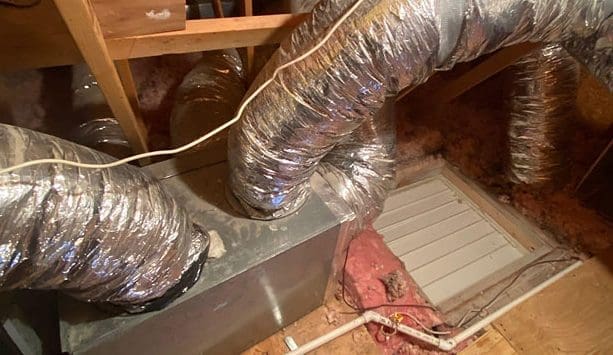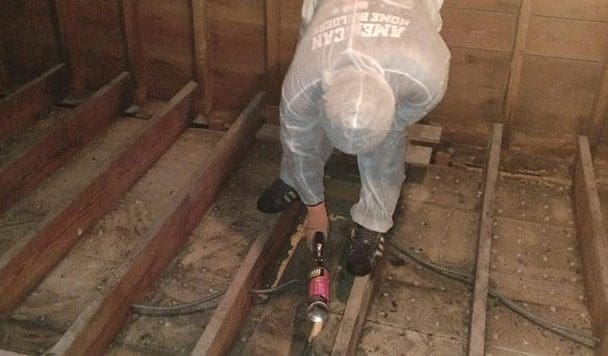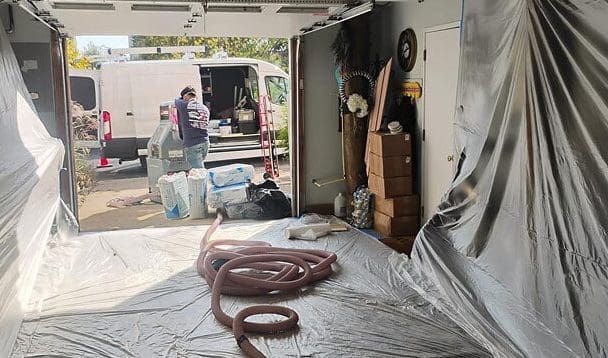
Understanding Air Leaks and Their Impact
What Are Air Leaks?
Air leaks occur when unwanted outside air enters your home, and conditioned air escapes through cracks, gaps, or openings. These leaks often happen around windows, doors, electrical outlets, and plumbing fixtures. While they may appear minor, these leaks can significantly impact your home’s comfort and energy efficiency. In Baltimore homes, especially older ones, air leaks are a common source of rising energy bills.
Get your HOME EVALUATION
Enter your information below

Why Sealing Air Leaks Matters
Sealing air leaks improves home energy efficiency, reduces utility bills, and enhances indoor comfort. By eliminating drafts and controlling airflow, homeowners can better maintain consistent temperatures throughout the year. For Baltimore residents, where summers are humid and winters cold, properly sealed homes result in more manageable heating and cooling costs and better year-round comfort.
Common Sources of Air Leaks
Windows and Doors
Windows and doors are among the most common sources of air leakage. Worn-out weatherstripping, cracked caulk, or misaligned frames allow outside air to seep in. Sliding glass doors and double-hung windows are especially prone to leakage. Inspect these areas closely to ensure tight seals.
Attics and Basements
Poor insulation and gaps in attics and basements are major contributors to home energy loss. Look for openings around attic hatches, recessed lighting, or foundation walls. Uninsulated rim joists and utility access points in basements often allow unfiltered air to pass through.
Plumbing and Electrical Penetrations
Gaps around plumbing pipes, electrical wiring, and outlets are often overlooked but can be significant sources of air infiltration. These penetrations are common in kitchens, bathrooms, and laundry areas. Use foam sealants or outlet gaskets to block airflow through these areas.
Fireplaces and Chimneys
Fireplaces and chimneys, if not sealed properly, can cause large amounts of conditioned air to escape. Ensure dampers close tightly when not in use, and consider inflatable chimney balloons or sealers to reduce air loss from unused fireplaces.

Methods to Detect Air Leaks
Visual Inspection
Begin with a simple visual inspection. Look for visible gaps, holes, and deteriorated caulking around doors, windows, baseboards, and vents. On windy days, inspect for movement in curtains or cobwebs as indicators of air infiltration.
Smoke Test Using Incense or Candle
Light an incense stick or candle near suspected leak areas with HVAC systems turned off. If the smoke wavers or is pulled in a particular direction, you’ve likely found an air leak. This easy method is particularly effective around window and door frames.
Blower Door Test
A blower door test is a diagnostic method used by professionals to measure a home’s airtightness. A large fan temporarily mounts in an exterior doorway to pressurize or depressurize the home, helping identify leakage points. It’s highly effective for comprehensive energy audits in Baltimore-area homes.
Infrared Thermography
Infrared cameras detect temperature differences in your home’s surfaces. Blue or cool spots on interior walls indicate air leaks or missing insulation. This method is excellent for finding hidden leaks and is often part of a professional home energy assessment.
DIY Solutions to Seal Air Leaks
Applying Caulk and Weatherstripping
Use caulk to fill stationary cracks and gaps around windows, doors, and siding joints. Weatherstripping works best for moving components like doors and window sashes. Both are easy, affordable, and essential tools for improving a home’s energy seal.
Using Spray Foam Insulation
Spray foam is ideal for sealing larger gaps, especially around plumbing lines, attic floors, and rim joists. It expands to fill spaces, providing both air sealing and insulation benefits. Low-expansion foam is suitable for small cracks, while high-expansion foam works in larger voids.
Installing Door Sweeps and Draft Stoppers
Door sweeps attach to the bottom of doors to block air from entering beneath. Draft stoppers, or “door snakes,” can be placed along thresholds or interior door bottoms to block airflow. These are particularly useful during colder months in Baltimore homes.
Sealing Ductwork
Leaky ductwork can waste up to 30% of your heated or cooled air. Use mastic sealant or foil tape to seal seams and joints, especially in unconditioned spaces like attics and crawlspaces. This small fix leads to noticeable improvements in HVAC performance and comfort.

When to Consult Professionals
Benefits of Professional Energy Audits
A professional energy audit provides a comprehensive review of your home’s energy use and highlights inefficiencies. In Baltimore, companies like American Home Energy offer advanced diagnostics including blower door testing and thermal imaging. These evaluations ensure every source of leakage is identified.
Advanced Sealing Techniques
For hard-to-reach or stubborn leaks, professional contractors can apply advanced air sealing techniques. This might include dense-pack insulation, air-sealing membranes, or retrofitting older HVAC systems. Hiring professionals guarantees long-lasting, code-compliant results for optimal energy performance.
Maintaining a Sealed Home
Regular Inspections and Maintenance
Air leaks can develop over time as materials expand, contract, and degrade. Schedule routine inspections, especially in spring and fall, to reapply caulk or replace worn weatherstripping. Consistent maintenance ensures your home stays energy-efficient throughout the year.
Seasonal Tips for Baltimore Residents
In Baltimore, summer humidity and winter cold make seasonal sealing a necessity. Reassess attic insulation and basement seals ahead of temperature extremes. Investing in smart thermostats and monitoring energy bills also helps detect sudden changes in energy usage that could signal new leaks.






